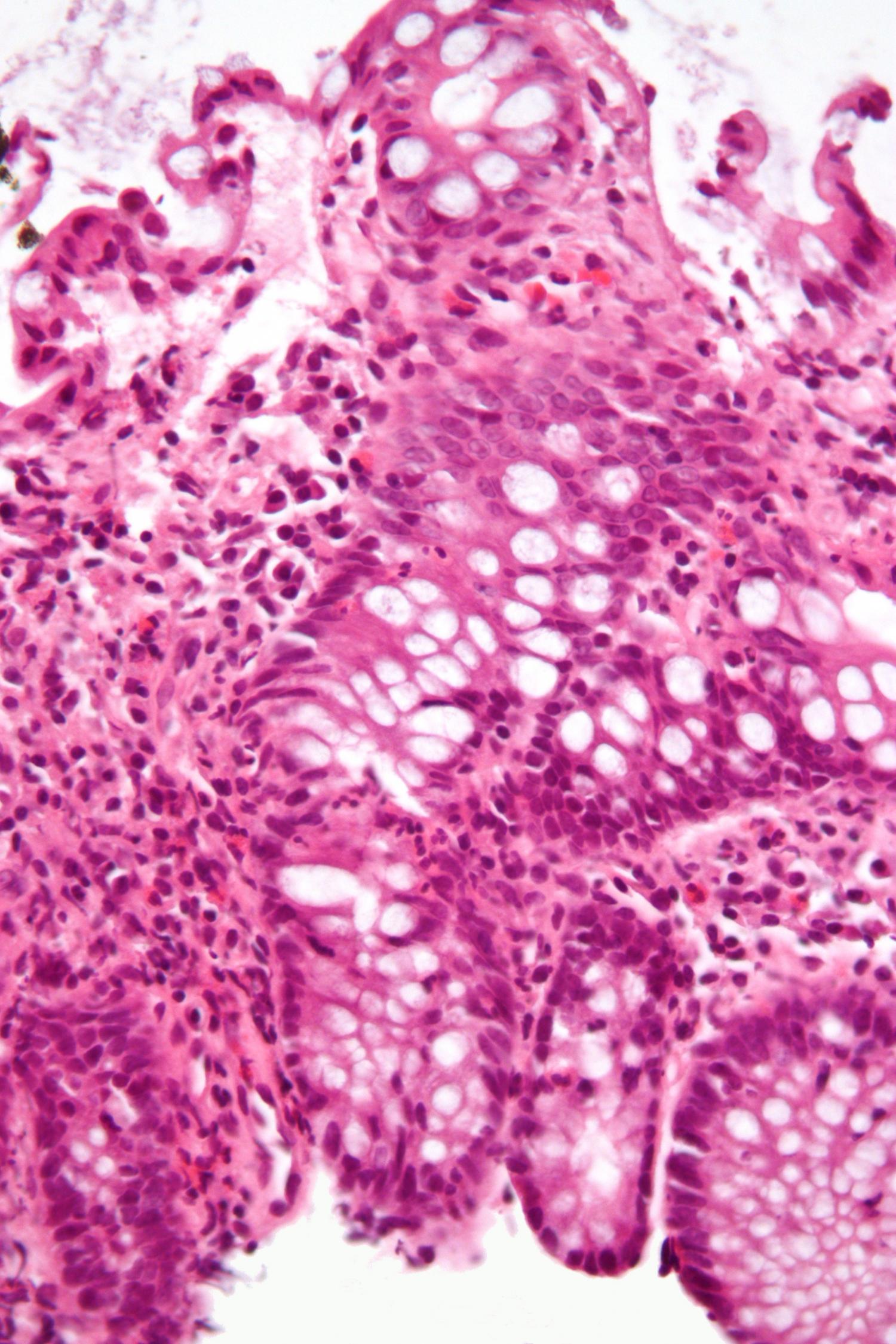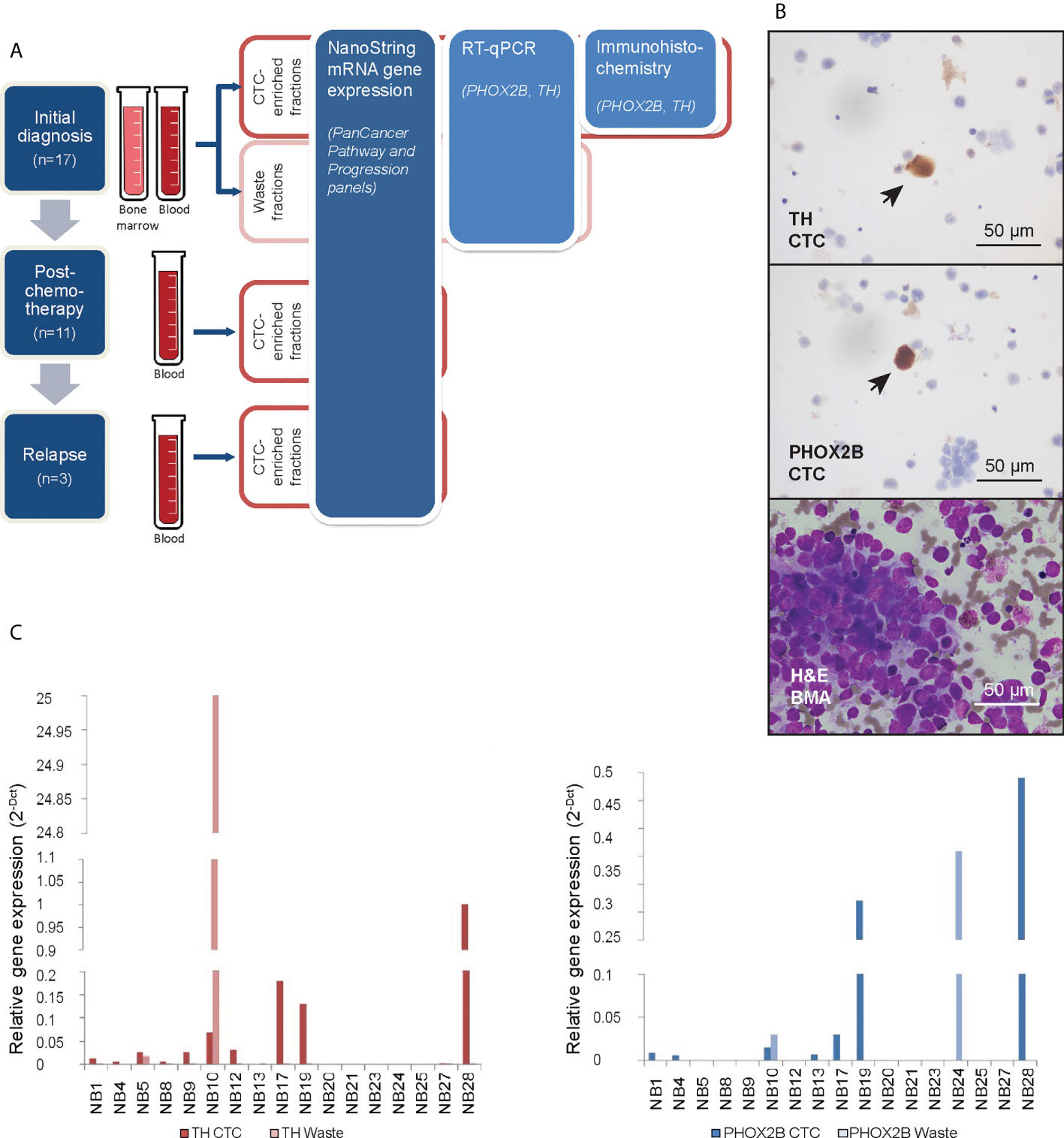Photomicrograph showing inflammation of the large intestine in a case of inflammatory bowel disease. Colon biopsy. Credit: Wikipedia/CC BY-SA 3.0
Mount Sinai researchers have published one of the first studies demonstrating the importance of reactive oxygen species in maintaining stem cell function and preventing inflammation during wound repair, which may provide better insight into the prevention and treatment of inflammatory bowel disease (IBD), according to findings published in the journal Intestine October 3.
Reactive oxygen species are highly reactive chemicals that are formed from oxygen. They serve as primary signals of cellular dysfunction that contribute to disease. Secretion from active forms of oxygen in the intestine, it is necessary to maintain stem cell function and is important for wound repair; however, it can also cause inflammatory effects. The Mount Sinai team identified key transcription factors that cause abnormal changes in stem cells, suggesting a significant role for reactive oxygen species in maintaining gut health.
“While it is clear that regulation of oxygen and reactive oxygen species plays a critical role in chronic disease in general and IBD in particular, this study provides a major advance in defining the key role of oxygen in maintaining a healthy epithelial barrier in IBD,” said senior author Judy H. Cho, MD, dean of the Department of Translational Genetics and the Ward-Coleman Chair in Translational Genetics, and vice chair of the Department of Pathology, Molecular and Cellular Medicine at the Icahn School of Medicine at Mount Sinai.
The research team examined the role of reactive oxygen species and NOX1, a protein used to produce these chemicals, by examining single-cell gene expression in vitro and in natural conditions in mouse models as well ex vivo in the form of a human intestinal biopsy obtained after a routine colonoscopy. They measured the amount of reactive oxygen species and analyzed the gene expression profile of the intestinal barrier cells from mice and humans with a subtype of IBD known as ulcerative colitis. Intestinal barrier cells cover the surface of the intestine and help digest food, absorb nutrients, and prevent intestinal bacteria from entering. Mount Sinai researchers compared gene expression data in both inflamed and non-inflamed colon tissues.
The researchers found that the combination of NOX1, a loss of function that leads to reduced reactive oxygen species, plus the presence of a substance known as TNF, which causes inflammation, leads to an abnormal increase in microfold cells. Microcomplex cells, also known as M cells, are critical for regulating the gut immune response. The research team found an abnormal increase in M cells as a result of the loss of reactive oxygen species stem cells in human and mouse models. This increase in the number of epithelial M cells leads to enhanced recruitment of immune cells in mice. By treating intestinal cells with reactive oxygen species, they were able to reverse the original defect caused by the loss of reactive oxygen species during inflammation.
“Active oxygen released by stem cells is critical to maintaining gut health by maintaining the proper balance intestines barrier cell types,” said lead author Nai-Yoon Hsu, Ph.D., a research associate in Judy Cho’s lab. The researchers encourage further research, which they say could include direct reactive oxygen species– stem cell modulation therapy for patients with IBD in future treatments.
The University of Oxford, Oxford, UK, contributed to the study.
NOX1 is essential for TNFa-induced intestinal epithelial ROS secretion and inhibits M-cell signatures, Intestine (2022).
Provided
Mount Sinai Hospital
Citation: Study Uncovers Mechanisms of Reactive Oxygen in Stem Cell Function and Inflammation Prevention (October 3, 2022) Retrieved October 3, 2022 from https://medicalxpress.com/news/2022-10-uncovers-mechanisms-reactive-oxygen -species. html
This document is subject to copyright. Except in good faith for the purpose of private study or research, no part may be reproduced without written permission. The content is provided for informational purposes only.






